Skip to main content
Getting Started with Azure Government
Requerimientos de procesador y memoria RAM para Exchange Server 2007
Los requerimientos de procesador y memoria para un servidor Exchange Sever 2007, dependen en su mayoría de la cantidad de usuarios y de la cantidad de correos que envían y reciben diarios.
A continuación se muestran los requerimientos de procesador por tipo de rol de Exchange Server 2007:
- Edge Transport
- Minimo: Procesador de 1 core
- Recomendado: Procesador de 2 cores
- Máximo recomendado: Procesador de 4 cores
- Hub Transport
- Minimo: Procesador de 1 core
- Recomendado: Procesador de 4 cores
- Máximo recomendado: Procesador de 8 cores
- Client Access
- Minimo: Procesador de 1 core
- Recomendado: Procesador de 4 cores
- Máximo recomendado: Procesador de 4 cores
- Unfied Messaging
- Minimo: Procesador de 1 core
- Recomendado: Procesador de 4 cores
- Máximo recomendado: Procesador de 4 cores
- Mailboxes
- Minimo: Procesador de 1 core
- Recomendado: Procesador de 4 cores
- Máximo recomendado: Procesador de 8 cores
- Multi-rol (Hub Transport, Client Access, Unified Messaging, Mailbox)
- Minimo: Procesador de 1 core
- Recomendado: Procesador de 4 cores
- Máximo recomendado: Procesador de 4 cores
Los procesadores soportados son:"
- Procesadores de arquitectura x64 Intel que soportan Tecnología Intel Extended Memory 64 (EMT64)
- Procesadores AMD que soportan la plataforma AMD64
NOTA: Los procesadores de la familia Itanium IA64 no son soportados.
A continuación se muestran los requerimientos de memoria RAM por tipo de rol de Exchange Server 2007:
- Edge Transport
- Minimo: 2GB/Servidor
- Recomendado: 1GB/Core (2GB mínimo)
- Máximo recomendado: 16GB/Servidor
- Hub Transport
- Minimo: 2GB/Servidor
- Recomendado: 1GB/Core (2GB mínimo)
- Máximo recomendado: 16GB/Servidor
- Client Access
- Minimo: 2GB/Servidor
- Recomendado: 1GB/Core (2GB mínimo)
- Máximo recomendado: 8GB/Servidor
- Unfied Messaging
- Minimo: 2GB/Servidor
- Recomendado: 1GB/Core (2GB mínimo)
- Máximo recomendado: 4GB/Servidor
- Mailbox
- Minimo: 2GB/Servidor
- Recomendado: 2GB + 2MB a 5MB - Variable por perfíl de usuario*
- Máximo recomendado: 32GB/Servidor
Perfil de Envío/Recepción diario Recomendación de
usuario (~50kb tamaño mensaje) Memoria para el Mailbox
Liviano 5 enviados/20 recibidos 2GB + 2MB/buzón
Promedio 10 enviados/40 recibidos 2GB + 3.5MB/buzón
Pesado 20 enviados/80 recibidos 2GB + 5MB/buzón
- Multi-rol (Hub Transport, Client Access, Unified Messaging, Mailbox)
- Minimo: 2GB/Servidor - Variable dependiendo de la cantidad de Grupos de Almacenamiento (Storage Groups)**
- Recomendado: 4GB + 2MB a 5MB - Variable por perfíl de usuario*
- Máximo recomendado: 8GB/Servidor
**Cantidad de Memoria Física
Storage Groups Mínima Requerida
1-4 2GB
5-8 4GB
9-12 6GB
13-16 8GB
17-20 10GB
21-24 12GB
25-28 14GB
29-32 16GB
33-36 18GB
37-40 20GB
41-44 22GB
45-48 24GB
49-50 26GB
Ejemplos para memoria:
Un servidor de Mailbox con 4000 usuarios de perfil pesado llegaría a 22GB de memoria RAM (2048MB + (4000*5MB))
SMART Room System Bandwidth Consumption
The SMART Room System for Microsoft Lync is SMART's solution for Microsoft's Lync Room System (https://blogs.technet.com/b/lync/archive/2013/02/19/the-lync-room-system-lrs.aspx). As any other Lync 2013 client, it consumes bandwidth that can be controlled, managed and administered by the Lync 2013 infrastructure.
Lync Room System is very similar to the regular Lync 2013 desktop client, except for the following caveats:
- Audio Codec: G.722 stereo
- Lync P2P video calls to/from LRS start in full screen mode on LRS screen (UI suppression), which kicks 720p or 1080p (default) from the very start of the meeting
- Dual screen LRS might go for even higher resolutions since video tiles are distributed on both screens (gallery view). LRS could be receiving a real estate of 240p per Lync 2013 client being displayed.
Keeping in mind the guidance of Lync Media Traffic (https://technet.microsoft.com/en-us/library/jj688118.aspx) and Lync 2013 Networking Guide (https://blogs.technet.com/b/nexthop/archive/2013/06/04/lync-server-2013-networking-guide-network-planning-monitoring-and-troubleshooting-with-microsoft-lync-server.aspx) , we can estimate the approximate bandwidth usage of the SRS:
Media | Scenario | Codec | Typical bandwidth + RTCP |
Audio | P2P, Conferencing | G.722 Stereo | 73.1 kbps + 5 kbps |
Video | 1920x1080 (16:9) | H.264 | 3,200 kbps + 10 kbps |
Now this is only taking into account audio and video feeds, but we also need to add content sharing or application sharing if it's being used (https://technet.microsoft.com/en-us/library/gg425781%28v=ocs.14%29.aspx):
Media | Typical |
Application sharing using Remote Desktop Protocol (RDP) | 434 kbps sent per sharer |
Application Sharing Capacity Planning for Persistent Shared Object Model (PSOM) Applications | Sent per sharer: 713.57 kbps Received per viewer: 552.92 kbps |
Sample Typical Scenario of SRS presenting Whiteboard
Important note:
This is a sample scenario and depicts these specific assumptions:
- All are Lync 2013 clients
- 5 Lync 2013 clients in meeting, plus the SRS
- All Lync 2013 desktop clients are sending typical H.264 1080p video (3,200 kbps) and G.722 (46.1 kbps) to the server
- We won't take into account the bandwidth consumption upload and download of the Whiteboard at the beginning of the meeting, but only when the meeting has already started and participants are fully engaged.
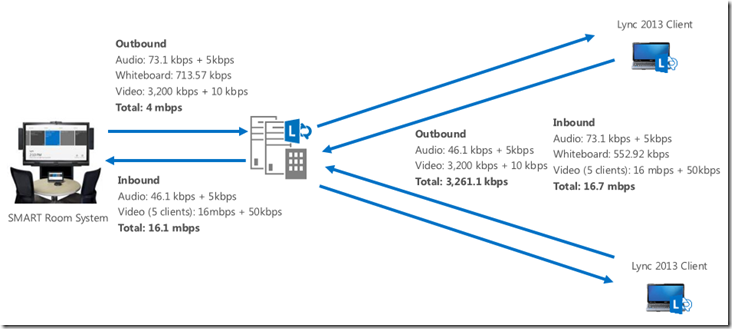
These are sample values, your own scenarios will vary depending on how your Lync conferencing policies and Call Admission Control is set up, therefore you should consider the following to have a great meeting room experience:
- Microsoft uses Quality of Experience for all Lync video/audio/web calls, therefore the bandwidth consumption in all calls is dynamic. (https://www.microsoft.com/en-us/download/details.aspx?id=6412). That means that a call that started consuming x kbps may consume less or more (adjusting dynamically) during the meeting without the end users knowing it's being adjusted. Lync client doesn't go below the minimum and doesn't go beyond the maximum thresholds depicted in the Networking Guide and Media Traffic guide (https://technet.microsoft.com/en-us/library/jj688118.aspx)
- The only way to "control the dynamism" of Lync QoE is to establish conferencing policies and CAC (Call Admission Control) in Lync Server to audio and video, which would enable you to "cap" the max used for audio and video. Lync conferencing policies can be applied to any Lync client, including the LRS client. Note that Lync Conferencing Policies in Lync Server can be complemented with QoS policies as well.
Guidance and resources on how to do this can be found here:
Soporte para Exchange 2003 en Virtualización
Microsoft soporta solamente la virtualización de Exchange Server 2003 en Virtual Server 2005 RC2 o versiones posteriores solo si las siguientes condiciones se cumplen:
- La versión de Exchange Server que está siendo ejecutada en la máquina virtual es Microsoft Exchange Server Service Pack 2 o posterior.
- Los "Virtual Machine Additions" de Virtual Server 2005 RC2 se encuentran instalados en el sistema operativo virtualizado.
- Exchange Server 2003 está configurado como un servidor "Stand-Alone", y no como parte de un cluster de Windows.
- El driver SCSI que se encuentra instalado en el sistema operativo virtualizado es el Microsoft Virtual Machine PCI SCSI Controller.
- La funcionalidad de "Virtual Hard Disk Undo" no se encuentra habilitada.
Para más información, se pueden conectar a ver el siguiente artículo:
320220 Support policy for Exchange Server 2003 running on hardware virtualization software
https://support.microsoft.com/default.aspx?scid=kb;EN-US;320220
TMG's moving out, I need a Reverse Proxy, what do I do?
Why do we need a Reverse Proxy for Lync? TechNet (https://technet.microsoft.com/en-us/library/gg398069.aspx) specifically mentions that the following features require external access through a reverse proxy:
- Enabling external users to download meeting content for your meetings.
- Enabling external users to expand distribution groups.
- Enabling remote users to download files from the Address Book service.
- Accessing the Lync Web App client.
- Accessing the Dial-in Conferencing Settings webpage.
- Accessing the Location Information service.
- Enabling external devices to connect to Device Update web service and obtain updates.
- Enabling mobile applications to automatically discover and use the mobility (Mcx) URLs from the Internet.
- Enabling the Lync 2013 client, Lync Windows Store app and Lync 2013 Mobile client to locate the Lync Discover (autodiscover) URLs and use Unified Communications Web API (UCWA).
On Sept. 12, 2012, Microsoft announced changes to the roadmaps of several Forefront products, including the discontinuation of Forefront Threat Management Gateway (TMG) 2010. Microsoft will continue to provide maintenance and support for Forefront Threat Management Gateway (TMG) 2010 through Dec.31, 2015. This announcement of course, has spanned off 3rd parties to step in, even Microsoft with a plain Windows 2008 R2 SP1 box to address the gap.
With this announcement, there are several changes that have been taken into consideration:
- A "Reverse Proxy" section in the Infrastructure qualified for Microsoft Lync has been included. The following solutions are listed:
- Internet Information Services Application Request Routing (IIS ARR), more info here.
- Even though becoming a dead end, Forefront Threat Management Gateway (TMG) 2010, more info here.
- F5 has posted a solution, more info here.
- Kemp has a solution, great article here.
To Wi-Fi or not to Wi-Fi
Recently I was with a coworker, helping him deliver a Lync 2013 workshop, and one of the major topics that comes around is whether Lync is ready for Wi-Fi use or not.
There are many considerations that come around if Wi-Fi should be used for real-time communications. I've always been very skeptical and haven't had a "seamless" experience unless I'm the only one using the access point.
Microsoft has taken the time to drill-down into extending customers certain guidelines such as deployment considerations, what issues affect Wi-Fi, among other subjects that can be addressed. The whitepaper can be downloaded from here, and you can find a summary of what it's about in the NextHop blog.
Also, Aruba has been recently certified for delivering a Wi-Fi solution for Microsoft UC. You can find more information here.
Vistazo General de Exchange 2010
He creado una presentación sobre los beneficios más directos que se obtienen de Exchange 2010. Beneificios como:
- Protección
- Archivación de correo
- Acceso desde cualquier lado
- Nuevo voice mail
- Sobrecarga en el buzón
- Disponibilidad
la cual pueden bajar desde Scribd, haciendo clic en la imagen siguiente:

Información acerca de proyectos de migración, me pueden contactar por el blog.
Para finalizar los invito a que visiten el sitio de la empresa para la cual laboro, Integration Technologies Corp., Voice Partner de Microsoft, haciendo clic en:

Activation Without .svc files – Config Based Activation (CBA)
.Svc files were perceived as a management overhead. In Net Framework 4.0, WCF services hosted in WAS/IIS do not require .svc file anymore.
We can activates service through the config Based Activation feature.
This feature allows for registration of services in web.config file. Here is a sample registration for two services in a single web.config file.
<system.serviceModel>
<serviceHostingEnvironment>
<serviceActivations> <add relativeAddress="CreditCheckService.svc" service="Microsoft.ServiceModel.Samples.CreditCheckService" /> <add relativeAddress="Payment/Service.svc" service="Microsoft.ServiceModel.Samples.PaymentCheckService" />
</serviceActivations>
</serviceHostingEnvironment>
</system.serviceModel>
Some details to remember about config Based Activation feature
- serviceHostingEnvironment is an application level configuration. Please place the web.config containng the configuration under the root of the virtual Application.
- CBA supports activation over both http and non-http protocol
- CBA feature requires extensions in the relatativeAddress i.e. .svc, .xoml or .xamlx. You can map your own extensions to the know buildProviders which will then enable you to activate service over any extension.
- Upon confict, CBA overrides .svc registrations.
- serviceHostingEnvironment is a machinetoApplication inheritable section. If you register a single service in the root of the machine then every service in the application will inherit this service.
Finally !!!
I am a Program Manager with the Connected Systems Division, and will be using this space to dump any use information WCF,WF and related technologies. I will try to keep my focus of the logs on hosting.
I also hope to seek your opinions,comments and feedback on various issues that I will be blogging.
Hosting WCF service with multiple IIS site bindings/base addresses per scheme
Technorati Tags: WCF
Here is a workaround to support this -https://ranamauro.blogspot.com/2008/07/hosting-wcf-service-on-iis-site-with_25.html
How can WCF support multiple IIS Binding specified per site ?
Background
IIS has web sites, which are containers for virtual applications which contain virtual directories. The application in a site can be accessed through one or more IIS binding.
IIS bindings provide two pieces of information – binding protocol and binding information. Binding protocol defines the scheme over which communication occurs, and binding information is the information used to access the site.
Example
Binding protocol – HTTP
Binding Information – IPAddress , Port, Hostheader
IIS supports specifying multiple IIS bindings per site, which results in multiple base addresses per scheme. A WCF service hosted under a site allows binding to only one baseAddress per scheme.
Solution in .Net Fx 3.0: Supporting Multiple IIS Bindings Per Site
Solution in .Net Fx3.5: BaseAddressPrefixFilters
I am updating this blog entry with a better solution support for 3.5. This one does not require you to write custom factories
Say you want to host the service over https://payroll.myorg.com:80 and https://payroll.myorg.com:9000
Step1 set the baseAddressPrefix to one of the addresses
Example
<system.serviceModel>
<serviceHostingEnvironment>
<baseAddressPrefixFilters>
<add prefix=" https://payroll.myorg.com:8000 "/>
</baseAddressPrefixFilters>
</serviceHostingEnvironment>
</system.serviceModel>
Step 2 Set the endpoints in your web.config file to be absolute URIs
<services>
<service>
<endpoint address=" https:// payroll.myorg.com:8000/Service1.svc/EP1" Binding="..." Contract="..." />
<endpoint address=" https:// payroll.myorg.com:9000/Service1.svc/EP12" Binding="..." Contract="..." />
</service>
</services>
Solution in .Net Fx4.0: BaseAddressPrefixFilters
Beta2 Fix
In the current Beta2 release of the .NET Framework, we added support for multiple site binding . Just set the binding in IIS site and the service will inherit the address
Final RTM Fix
In the final bits, we decided to make it an opt-in due to application compatability reasons. In order to enable multiple site binding, you need to set multipleSiteBindingEnabled to true in your application. Multiple site binding is supported only for Http protocol. The address of endpoints in the configuration file need to be complete URI. When porting your 3.0 or 3.5 workaround to 4.0 you need to keep this particular aspect.
<serviceHostingEnvironment multipleSiteBindingsEnabled="true" />
How do I set binding and enable protocols for Non-Http Transports in IIS?
Current in Vista the only mechanism for turning on the settings for Non-Http transports is through AppCmd.exe (For information on Hosting in WAS read - How to- Host a WCF Service in WAS) .This capability has been added in Windows Server 2008 and Windows Vista sp1. Through IIS Manager, you will be able to set binding on the site and enable the protocol on the Virtual Application. The screenshots below walk you through the steps.
Step 1 Set the Binding on the Site

Step 2 Enable the Protocol on the Virtual Application under the site

.NET 4.0 Beta1/Beta2 Web Application Configuration section missing declaration error
Symptoms
If you encounter the following error in your web application (things hosted in IIS) "The configuration section <sectionName> cannot be read because it is missing a section declaration "
examples
"The configuration section 'standardEndpoints' cannot be read because it is missing a section declaration"
"The configuration section 'tracking' cannot be read because it is missing a section declaration"
then you need to install either SP2 of Vista/Win2k8 or the hotfix mentioned in KB article 958854.
I would actually recommend anyone trying out 4.0 Beta1 bits always install the hotfix below.
Issue
A cut and paste from the KB article
"A hotfix rollup is available for Internet Information Services (IIS) 7.0 to support the Microsoft .NET Framework 4.0. This hotfix rollup resolves the following issues that occur when you use the .NET Framework 4.0 with IIS 7.0:
-
- You cannot use the IIS Manager UI (Inetmgr.exe) to manage both .NET Framework 2.0 applications and .NET Framework 4.0 applications.
- You cannot use WMI to manage .NET Framework 4.0 configurations.
- The managed runtime version is not set correctly in the worker process (W3wp.exe).
- The IIS configuration system does not determine the correct managed runtime version.
- You cannot use the IIS 7.0 command-line management tool (Appcmd.exe) to manage .NET Framework 4.0 configurations.
- The IIS Manager UI (Inetmgr.exe) shows the .NET Framework 2.0 Provider features for .NET Framework 4.0 applications and site
"
Here is the link to the KB article
https://support.microsoft.com/default.aspx/kb/958854
Solution
Install Windows Server 2008 /Vista Sp2
https://technet.microsoft.com/en-us/dd727510.aspx
or
Install hotfix
https://support.microsoft.com/hotfix/KBHotfix.aspx?kbnum=958854&kbln=en-us
.Net Framework 3.0 Shipped
This Entry is a bit late, but nevertheless .....
This is an additive release to 2.0 which contains Windows Communication Foundation (WCF), Windows WorkFlow Foundation(WF)Windows Presentation Foundation (WPF) and Windows Cardspaces. No new features have been added to the base existing framework
This is the Windows Vista SDK RTM release which also contains the SDK for .Net Framework 3.0 .
Monthly refreshes of WCF SDK can retrieved from https://msdn2.microsoft.com/en-us/library/aa388579.aspx . MSDN Refreshes contain only conceptual and reference documentation updates. Most likely there are no issue with our tools ;)
WCF SDK contains conceptual documentation, reference documentation, tools like Svcutil.exe etc., libs, and header files.
Supporting Multiple IIS Bindings Per Site

If you see this error when you are hosting in IIS then most probably you have multiple IIS bindings per scheme in your web site. WCF in .Net Framework 3.0 ,out of the box, does not support multiple binding per site, but this can enabled by extending the System.ServiceModel.Activation.ServiceHostFactory, and providing a CustomServiceHostFactory. CustomServiceHostFactory picks the appropriate base address for the application. The Factory attribute in the ServiceHost directive is set to the CustomSerivceHostFactory.
The only drawback is every developer hosting their application will need to change the svc file to provide the CustomServiceHostFactory, which picks the appropriate base address.
Sample Code
public class MultipleIISBindingSupportServiceHostFactory : ServiceHostFactory
{
protected override ServiceHost CreateServiceHost(Type serviceType, Uri[] baseAddresses)
{
Uri[] requiredAddress = GetAppropriateBase(baseAddresses);
return base.CreateServiceHost(serviceType, requiredAddress);
}
Uri[] GetAppropriateBase(Uri [] baseAddresses)
{
List<Uri> retAddress = new List<Uri>();
foreach (Uri address in baseAddresses)
{
if (address.DnsSafeHost == "localhost")
{
retAddress.Add(address);
}
}
return retAddress.ToArray();
}
}
In the svc file, fill in the Factory attribute
<%@ServiceHost Factory="NS.MultipleIISBindingSupportServiceHostFactory" Service="CalculatorService" %>
Tech Ed 2007
Tech Ed 2007 was in Florida this year and was attended by over 13,000 people . Wow! that is huge . Lots of teched content is still accessible online . Check out this site for more information https://www.microsoft.com/events/teched2007/default.mspx
I gave a chalk talk on "Hosting WCF and WF applications in IIS" ,which was well received and did booth duty rest of the time. This gave me an opportunity to interact with many customers, understand their pain points and solve a few of their problems.
I also took some pictures at Tech-Ed .....

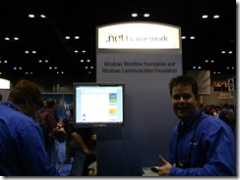
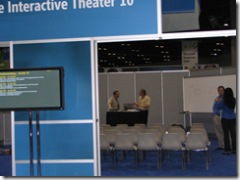
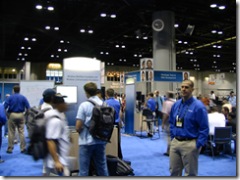


Portofino Bay at Universal (the last pic is the map of the hotel) is the resort hotel I stayed in Orlando; I highly recommend this place.
Technorati Tags: WCF
WCF/WF Hosting Enhancements in .NET4.0 and Windows AppFabric V1
I wrote a blog on .NET Endpoint on hosting investments we made in .NET framework 4.0 and Windows AppFabric. Here is a link to the blog - https://blogs.msdn.com/endpoint/archive/2009/12/08/hosting-enhancements-in-net4-and-windows-server-appfabric.aspx .
Azure Automation in Azure Government
If you have been following closely, you would have realized Azure Automation is now available for Azure GOV. There are a couple of things you need to keep in mind when you are trying to run your first automation script with Azure GOV. I'm going to be outlining the steps below:
Step 1 - Create a certificate with makecert (or you could use IIS too)
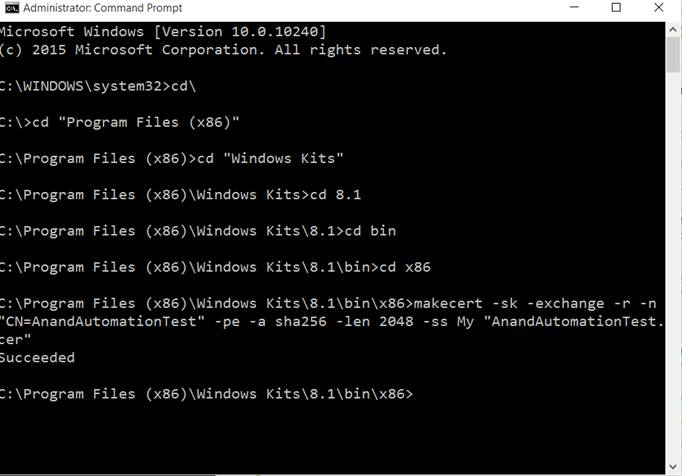
Step 2 – Install the certificate in the CurrentUser's Personal Certificate Store
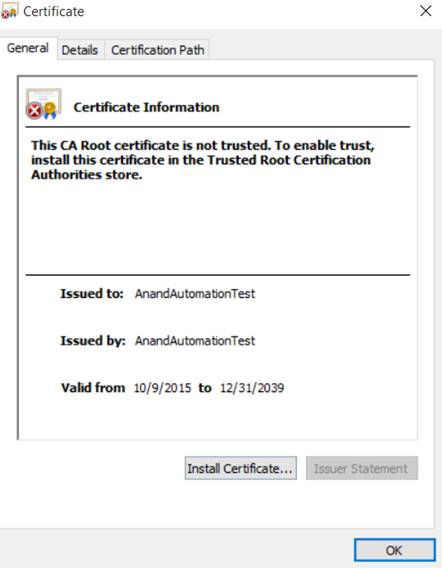
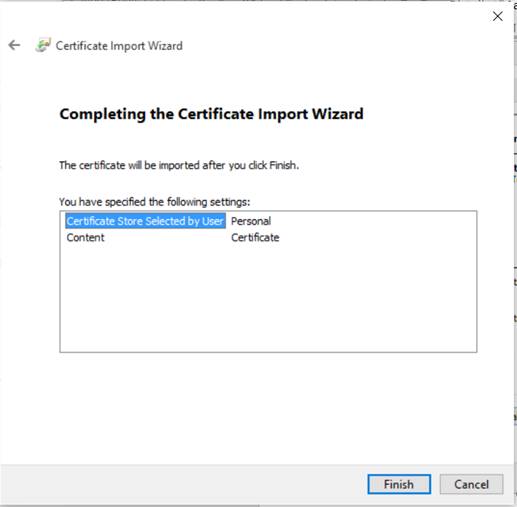
Step 3 – Upload this certificate in the management certificate section of the Azure Subscription (the .CER file )

Step 4 – Now export the certificate from the personal store using a password and save it to a .PFX file

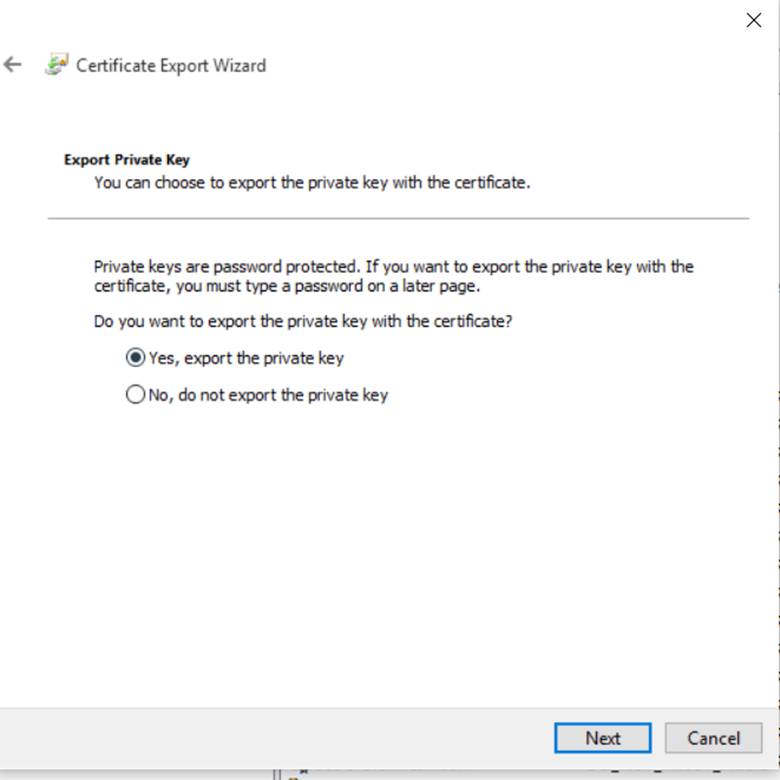
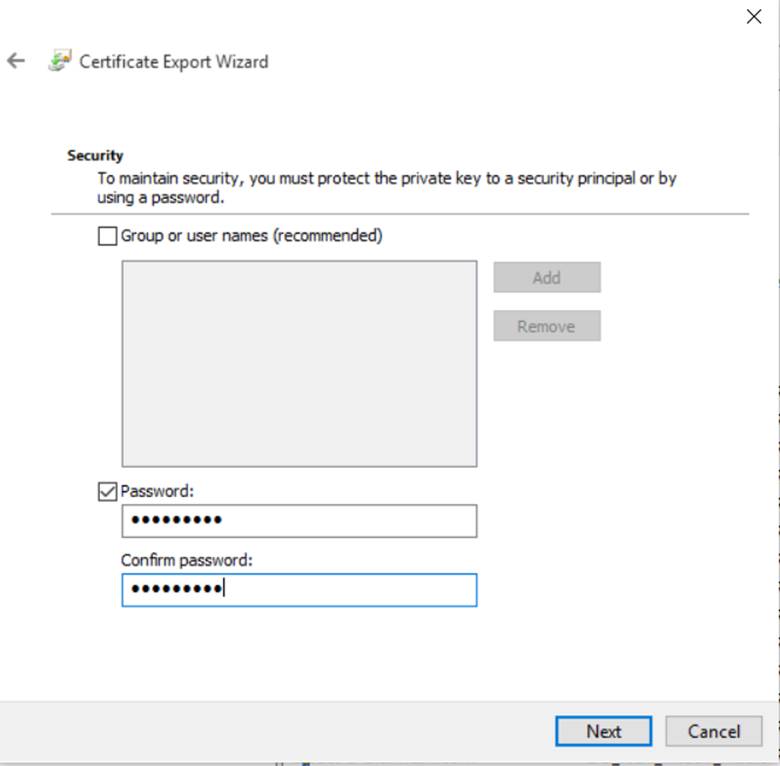
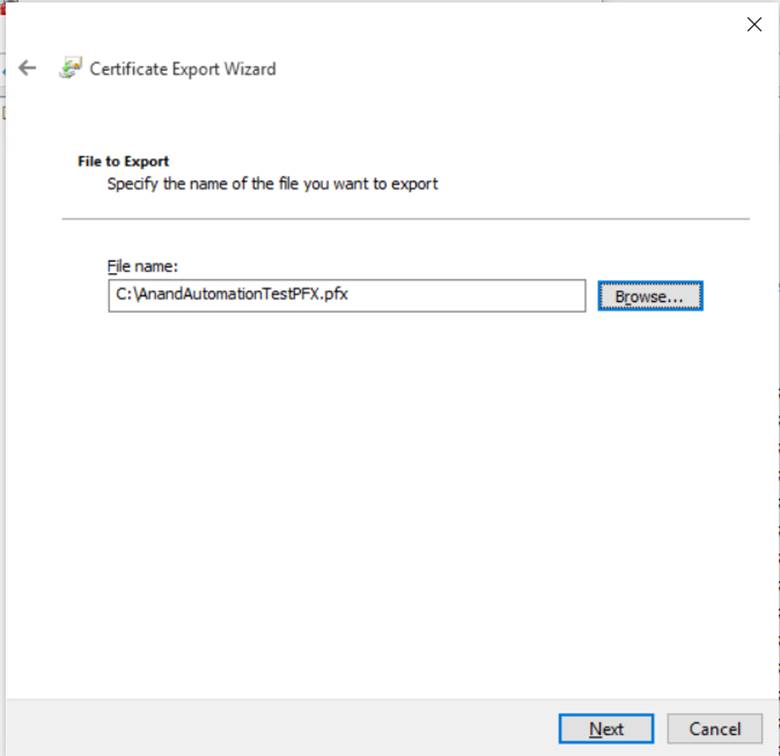
Step 5 – Now add the .PFX file as an asset onto Azure Automation
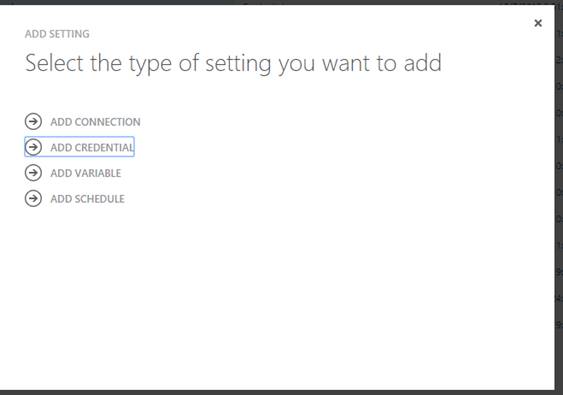
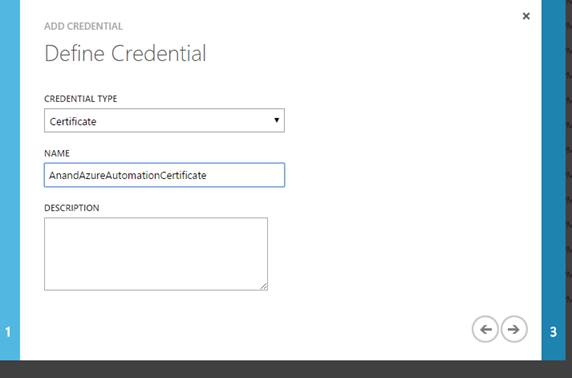
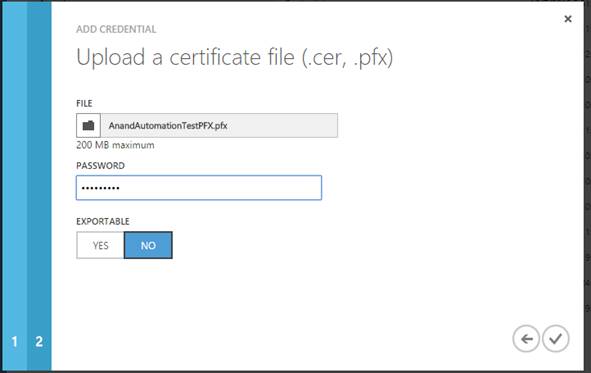
Step 6 – Create variables for 'SubscriptionName' and 'SubscriptionID'
Step 7 – Create a Runbook under Automation and enter the following to establish a connection and get started. The ones that we need to explicitly add for the Azure Government are highlighted below
workflow AnandTestRunbook
{
Add-AzureEnvironment -name "AzureGovernment" -serviceendpoint https://management.core.usgovcloudapi.net
$subscriptionID = Get-AutomationVariable -Name 'SubscriptionID'
$subscriptionname = Get-AutomationVariable -Name 'SubscriptionName'
$certificate = Get-AutomationCertificate -Name 'AnandAzureAutomationCertificate'
Set-AzureSubscription -SubscriptionName $subscriptionName -SubscriptionId $subscriptionID -Certificate $certificate -Environment "AzureGovernment"
Select-AzureSubscription -name $subscriptionname
}
Step 8 – From here on you are good to go, you should be able to use it how you would normally use an Azure Automation script
Good luck and Happy Automating!!
Azure Serverless Computing Explained in less than 5 minutes #LessThan5Min
This is my attempt at explaining Azure Serverless Computing in less than 5 minutes. This also contains an end to end demo of serverless computing using Azure Logic Apps, Azure Cognitive services and Azure Functions.
https://www.youtube.com/watch?v=7tP43V3cl5U
Azure Cognitive Services with Azure Logic apps - Errors and Workarounds
Recently I was working to build a logic app that could analyze tweets using Azure Cognitive services and for each picture in the tweet detect all of the faces. I ran into an issue because it requires nested for each loops (a tweet could have many pictures, and a picture could have many faces). Here's how I was able to work around it while these feature is ready to roll out into production in the next week ( Sept 2017)
Error 1 
When you try to add another foreach to get the output from a Face API output – you will might get the below error (please note this error should be fixed by the first week of September 2017), however in the mean time you can use the below workaround to get past the error.
The error that you will get is - This output is an array. A foreach cannot be nested inside of another foreach.
Workaround
This is because Face API returns an arrary, in order to workaround this error – you can perform the same action by going to the following URL to access your subscription – https://aka.ms/nestedforeach ( this should be fixed in the general release starting next week). You would then be redirected to a newer version which would be something like below:

Once you are in there – you will be able to edit the Azure Logic App and add the required variables without running into the above error. However you might run into another error when might run into another error which is addressed below
Error 2
Update 8/28/2017 - Thanks to the amazing peeps at our Microsoft Product Group - this issue was fixed just ONE day post reporting to them :) PS: the below error may not be relevant anymore.
Once you are in the newer version by clicking on the link, you will then be able to add the output variables from the Azure Cognitive Services Face API, however once you click to add one of the output variables – you will see that the ability to add more of the output variables is disabled. Please refer screenshot below. This issue too should be fixed by the first week of September 2017. However in order to workaround the error follow the steps mentioned below
- You will be able to add the first output value, but the minute you add that – the ability to add more output variables from the Azure Cognitive Services Face API is disabled.

Workaround
In order to workaround this – you will need to go to the code. Before going to the code view – fill out place holder values for the fields as text fields – Example : AgeText, GlassesText etc – so that it is easier to replace the placeholder.
Go to the step where you see the variable, in this case – smile, see highlighted

Replace those
- GenderText --> @{items('For_each_2')?['faceAttributes']?['gender']}
- Glasses --> @{items('For_each_2')?['faceAttributes']?[glasses]}
- Smile --> @{items('For_each_2')?['faceAttributes']?[smile]}
And then you will be a happy person [smile ratio – 1.0 :)]

Cheers
Anand Kumar R
Getting Started with Azure Government
Update - 4/4/2017 -
This post is now redundant, all you have to use is the Environment Variable -->
Add-AzureAccount -Environment AzureUSGovernment
Yep ! Thats it :) For endpoint mapping - you can still use this reference or use Get-AzureEnvironment AzureUSGovernment to give you all the details
Original Article
If you are just getting started with Azure government, you would have realized by now, that there are a few things which needs to be changed in order to get it working exactly like how it did in Azure Public. To begin with here are a couple of things, I will keep updating this post as and when I stumble upon newer things which needs change in order to work with Azure Government
Azure Government PowerShell
To get started with managing Azure Government using PowerShell, you would need to make a couple of modifications before actually running the Import-AzurePublishingSettings file
Add-AzureEnvironment -name "AzureGovernment" -PublishSettingsFileUrl "https://manage.windowsazure.us/publishsettings/index?client=xplat" -ServiceEndpoint "https://management.core.usgovcloudapi.net" -ManagementPortalUrl "https://manage.windowsazure.us" -StorageEndpoint "core.usgovcloudapi.net" -ActiveDirectoryEndpoint "https://login.windows.net/" -ActiveDirectoryServiceEndpointResourceId "https://management.core.usgovcloudapi.net/" -ResourceManagerEndpoint "https://management.usgovcloudapi.net" -GalleryEndpoint "https://gallery.usgovcloudapi.net"
Set-AzureEnvironment "AzureGovernment"
In order to download the publishing settings file, you would need to access the following URL - https://manage.windowsazure.us/publishsettings/index?client=xplat
Once you have run the first two commands and downloaded the publishing settings file, you should be good to run the Import-AzurePublishingSettings command
Endpoint Mapping
The endpoints are slightly different for Azure Government when compared to Azure Public. Please refer below for the mapping.
| Management Portal | manage.windowsazure.com | manage.windowsazure.us |
| General | *.windows.net | *.usgovcloudapi.net |
| Core | *.core.windows.net | *.core.usgovcloudapi.net |
| Compute | *.cloudapp.net | *.usgovcloudapp.net |
| Blob Storage | *.blob.core.windows.net | *.blob.core.usgovcloudapi.net |
| Queue Storage | *.queue.core.windows.net | *.queue.core.usgovcloudapi.net |
| Table Storage | *.table.core.windows.net | *.table.core.usgovcloudapi.net |
| Service Management | management.core.windows.net | management.core.usgovcloudapi.net |
| SQL Database | *.database.windows.net | *.database.usgovcloudapi.net |
For example, when trying to create a Storage context using PowerShell you would add the following switch –EndPoint:
$endpointsuffix = "core.usgovcloudapi.net"
New-AzureStorageContext –StorageAccountName $sourceStorageAcc -StorageAccountKey $sourceStoragKey -Endpoint $endpointsuffix
In order to connect to Azure Media Services in Azure Government, the following changes need to be in place. All the below information can be retrieved when you click on Manage Keys under Azure Media Services.
While setting up the credentials:
-
_cachedCredentials = new MediaServicesCredentials( _mediaServicesAccountName, _mediaServicesAccountKey, _mediaContextScope, _acsBaseAddress);
Please do let me know if you have any questions in the comments section.
Good Luck
Anand Kumar R
Popular posts from this blog
AD RMS to AD RMS to Azure Information Protection Part 1 The Scenario: So, you have read my previous blog posts about AD RMS side-by-side migration and Enterprise Migration from AD RMS to AIP using SCCM but unfortunately both of those articles assume best case scenario for the original AD RMS cluster. Sadly, that is not always the way things work. In the real world, the AD RMS instance may have been initially installed on Windows Server 2003 using RMS 1.0 and was subsequently upgraded to 2008 R2 keeping all of the settings pretty much the same. This usually means using http only and having no CNAMEs for AD RMS or SQL. This makes my happy articles on upgrading to newer versions of AD RMS or to AIP a lot less straightforward. Let's fix that. The Setup: Luckily, most of the concepts for migration are the same as what I documented in the previous two articles, so I am going to happily plagerize reuse the content in those articles to make something new. This a...
MEDC in Las Vegas
Windows Azure:新计划程序服务,读取访问同步冗余存储以及监测更新 [原文发表地址] Windows Azure: New Scheduler Service, Read-Access Geo Redundant Storage, and Monitoring Updates [原文发表时间] December 12, 2013 12:41 PM 今天早上我们推出了windows Azure的另一组增强功能。今天的新功能包括: 程序调度:新的windows Azure计划程序服务 存储:新的同步读写冗余存储方案 监测:windows Azure服务的监测及诊断的增强功能 所有的这些改进现在都可以使用(注意有些功能仍然是在预览)。下面是有关他们的更多详细信息: 程序调度:新的windows Azure计划程序服务 我很高兴宣布我们可以预览新的Windows Azure调度服务。Windows Azure调度服务允许你安排启用HTTP/S端点的任务或者按你制定的任何计划向存储队列上发送信息。使用调度程序,你可以创建可靠的调用Windows Azure内部或外部服务的任务并且按照常规计划立刻运行或者设置他们在未来某刻运行。 想要开始使用调度程序,首先你需要在 Windows Azure Preview 页面上为预览进行注册。一旦在预览页中注册成功后,你可以登陆到管理门户并且开始使用它。 创建一个调度任务 一旦你在你的订阅中启用调度预览,你可以用以下几个简短步骤很容易的创建一个新的任务。 在Windows Azure门户管理网站内单击 新建-> 服务程序 -> 调度 –> 自定义创建: 选择一个你想要运行任务的Windows Azure 区域,之后选择一个已有的任务收集器或者创建一个新的并把任务加进去: 之后你就能定义你的任务操作。在本例中,我们会创建一个向web站点发送GET 请求的HTTP 操作(你也可以使用其他的HTTP协议,像HTTPS)。 对于处理长时间的请求或者在脱机状态启用某项服务,你也许更期望给存储队列添加一些信息而不是坚持启用一个Web 服务。要给存储队列添加信息你只需要选择存储队列作为你的操作,之后创建或选择一个存储帐号及队列用来发送请求: 一旦你定义了你要...
Exclude a path from WSS 3.0 on Windows Server 2008
Recursive CTEs continued ... In this post, I will finish the discussion of recursive CTEs that I began in my last post. I will continue to use the CTE examples from Books Online . To run these examples, you'll need to install the Adventure Works Cycles OLTP sample database . In my last post, I explained that all recursive queries follow the same pattern of one or more anchor sub-selects and one or more recursive sub-selects combined by a UNION ALL. Similarly, all recursive query plans also follow the same pattern which looks like so: |--Index Spool(WITH STACK) |--Concatenation |--Compute Scalar(DEFINE:([Expr10XX]=(0))) | |-- ... anchor sub-select plan(s) ... |--Assert(WHERE:(CASE WHEN [Expr10ZZ]>(100) THEN (0) ELSE NULL END)) |--Nested Loops(Inner Join, OUTER REFERENCES:([Expr10YY], [Recr10XX], ...)) |--Compute Scalar(DEFINE:([Expr10ZZ]=[Expr10YY]+(1))) ...




























Comments
Post a Comment